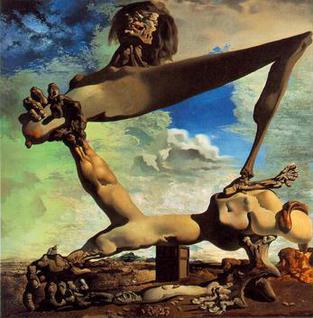「医療」の概念についての覚書
concept of medicine

「医療」の概念についての覚書
concept of medicine

●医療(医学)の最大限の広義の定義(→「医療・医学・メディシン」)
健康と病気に関する人間のさまざまな諸実践のことを、もっとも広い意味における医療(医学) と呼ぶことができる。
| Medicine
is the science[1] and practice[2] of caring for patients, managing the
diagnosis, prognosis, prevention, treatment, palliation of their injury
or disease, and promoting their health. Medicine encompasses a variety
of health care practices evolved to maintain and restore health by the
prevention and treatment of illness. Contemporary medicine applies
biomedical sciences, biomedical research, genetics, and medical
technology to diagnose, treat, and prevent injury and disease,
typically through pharmaceuticals or surgery, but also through
therapies as diverse as psychotherapy, external splints and traction,
medical devices, biologics, and ionizing radiation, amongst others.[3] |
医学とは、患者をケアし、その傷病の診断、予後、予防、治療、緩和を管 理し、健康を促進する科学[1]および実践[2]である。医学は、病気の予防と治療によって健康を維持・回復するために発展してきたさまざまな医療行為を 包含している。現代の医学は、傷害や疾病の診断、治療、予防のために、生物医学科学、生物医学研究、遺伝学、医療技術を応用しており、一般的には医薬品や 外科手術が用いられるが、心理療法、外反器や牽引、医療機器、生物学的製剤、電離放射線など、多様な療法が用いられている[3]。 |
| Medicine has been practiced
since prehistoric times, and for most of this time it was an art (an
area of creativity and skill), frequently having connections to the
religious and philosophical beliefs of local culture. For example, a
medicine man would apply herbs and say prayers for healing, or an
ancient philosopher and physician would apply bloodletting according to
the theories of humorism. In recent centuries, since the advent of
modern science, most medicine has become a combination of art and
science (both basic and applied, under the umbrella of medical
science). For example, while stitching technique for sutures is an art
learned through practice, knowledge of what happens at the cellular and
molecular level in the tissues being stitched arises through science. |
医学は先史時代から実践されており、そのほとんどの期間、それは芸術
(創造性と技術の領域)であり、しばしば地域文化の宗教的・哲学的信念と結びついてい
た。例えば、薬師が薬草を塗って治癒の祈りを捧げたり、古代の哲学者や医師がユーモアの理論に従って瀉血を施したりする。近代科学が登場して以来、ここ数
世紀、ほとんどの医学は芸術と科学(医学の傘の下で、基礎と応用の両方)の組み合わせになっている。例えば、縫合糸を縫う技術は練習によって習得される芸
術であるが、縫合される組織の細胞レベルや分子レベルで何が起こっているかについての知識は科学によってもたらされる。 |
| Prescientific forms of medicine,
now known as traditional medicine or folk medicine, remain commonly
used in the absence of scientific medicine and are thus called
alternative medicine. Alternative treatments outside of scientific
medicine with ethical, safety and efficacy concerns are termed quackery. |
現在では伝統医学や民間療法として知られている、科学的根拠のない医療は、代替医療と呼ばれている。倫理的、安全性、有効性に懸念がある科学的医学以外の 代替医療は、ヤブ医者(あるいは偽医者)と呼ばれる。 |
| https://en.wikipedia.org/wiki/Medicine |
「医療・医学・メディシン」 |
●日常的慣用法としての「医療」
従来の日本語の用語の定義は次のようである。(『広辞苑』第四版より)
【医科】医術に関する学科。内科・小児 科・外科・眼科・皮膚科・耳鼻咽喉科・産婦人科などの総称。
【医学】生体の構造・機能および疾病を 研究し、疾病の診断・診療・予防の方法を開発する学問。基礎医学・臨床医学・社会医学・応用医学などに分けられる。
【医療】医術で病気をなおすこと。療 治。治療。
【医科学】私(池
田光穂)がもつ修士の学位は医科学(master of medical science)である。
とある。 すなわち「医科」とは、人間社会における諸処の技術=術(テクネー)におけるある特定のジャンルのことをさす。その意味で「医科」「歯科」「薬科」など と区分けされることには(人間社会における「技術」の分業という観点からみて)一定の意味がある。
次に「医学」と「医療」の区分であるが、これは近代医療体系が導入されてこのかた、常に問題 となるところであるが、広辞苑の定義は明確である。「医学」は医療とは関係を保ちながらも独自のシステムを形成しており、また同時に「医療」の下位のジャ ンルとして位置づけられることを示している。すなわち、従来考えられてきた「実践イコール医療、学問イコール医学」と二分して理解することはできない、と いうことである。
医療(メディシン)と医科学(メディカルサイエンス)を区分しようとする話があるが、話はそ
う簡単ではない(澤瀉久敬 「医の理念」講演、第15回日本病院学会特別講演,1965年5月)
また重要なことは「医療」は「医術による実践 medical practice」とされていることである。(次項参照)
●「医術」概念の復権
医術はギリシャ語のテクネー・イアトリケーの訳語として考えられるが、今日「医術」という言 葉の復権がみられる。それは、近代医療における自然科学方法が成果を挙げながらも完全ではないことが明かになったこと、に起因する。このことは、「癒し」 概念への関心、バイオエシックスの登場、社会医学や医学史関連分野の業績の近年の増加などによっても傍証することができる。
ここで改めて問題となることは、「医療」と「医術」の概念をどのように位置づけるかという ことなのである。川喜田(1977上:320)は医療の英訳として「癒しの術」(healing art)とまで記している。テクネー・イアトリケーのについて理解したことがあるものは、今日用いられる「医療技術」が「医術」に相当するとは決して考え ない。なぜなら、その人は「医療技術」は近代西洋科学における、テクネーの要素還元的な一部の技術分野でしかないことを熟知しているからである。
またテクネー・イアトリケーのを理解するために、古代ギリシャの古典をもってよしとする訳 にはいかない。近代科学技術によって生じた、古典時代には全く経験したことのない事態に我々は遭遇しているからである。 したがって、現代においてあるべき「医療の姿」を再創造するためには、現代における個別の医療実践を試みるだけにとどまらず、包括的な医療実践とは何か について、実践を通して考察しなければならない。
(看護福祉学部は、そのような理念と実践の創造の場であると認識されていることをここで再確 認すべきである。)
●「医療」を再定義すること
従来の「医療」には、狭義の医家が診療・治療することという、きわめて限定された意味しか 与えられてこなかった。そのため「医療」がそのような狭い意味にとられる状況は避けられない。
したがって、ここで我々が前項で主張した「新しい医療概念」について理解してもらうために は、「医療という概念は、近代科学的医学の反省に立って、現在包括的に再定義されつつある」という事態をまず第一に承知させる必要がある。
さらに「新しい医療という実践と概念の総体は、現在発展途上にあり、その概念を創造し利用 する者の手に委ねられている」ということを理解することも必要である。
では、この「新しい医療概念」とは、どのようなものであるべきなのか?
●「新しい医療概念」についてのメモランダム
現状を冷静に理解すると、そのような「新しい医療」という概念がすでに完成されているので はないことを、基本的に理解しておく必要がある。しかしながら、その概念の登場を待って実践を開始するということは非現実的である。事態はすでに始まって いるからである。したがって本学ならびに本学園が、このような医療概念および実践の先頭をきってリードする気概を持たねばならない。この「新しい医療」に ついて、現在までに指摘されてきたことをもとに、メモランダム風に箇条書すると次のようなことが指摘されよう。
a.医療を、狭義の医家(例:医師)による特定の場(例:診療室)における治療実践と して捉えないこと。したがって、歯科・薬科・看護・福祉などの諸実践は、この包括的医療実践と深く関わっていることを改めて認識すべきである。
b.従来試みられてきた「近代医療批判」の内容を詳細に検討し、それに対して対処的に 改善策を提示することができる知的営為があること。すなわち「新しい医療」という構成に自己調節/自己改善という考え方が備わっていることである。そのた めには、高度な研究機構を整備するとともに、今後は研究と教育と機能を従前以上に密着させる必要が生じることが予想される。
c.医療人のみならず、一般の人びとにも情報が公開され、相互に信頼して利用されるシ ステムが構築される必要性。「新しい医療」の教育には、医療人のみならず、児童や生徒などから一般社会人に至るまでが参加できるような機会がもたらされな ければならない。そのためには、公開講座など大学が社会に対して開かれた機能をもつことを実践することも「新しい医療」には必要である。
●まとめ
1.「医療」の慣用的および語義的な意味においても、その概念は包括的なものである。
2.近代医療の発達がもたらした恩恵と弊害について考察されるにつれて、医療の古典的な包括 的概念に対する再評価が登場してきた。また同時に、現代社会の固有の問題への対処のために、古典的で包括的な「医療」概念の再検討のほかに、「新しい医 療」概念の確立が希求されている。
3.本学が名称に採用する「医療」とは、その新しい医療概念を希求しつつ、かつ創造する営為 であることを、改めて確認する必要がある。
4.「新しい医療」概念の確立のためには、従来鋭意努力されてきた教育と研究という2本柱 を、さらに強固に関連づけるとともに、高度な研究体制で望まねばならない必要が生じる。
●リンク
【ちゅうい】
以上のメモは1993年2月17日に、以前勤務していた職場(東日本学園大学——現在の北海道 医療大学)において、医学部を含まない大学の総称として 「医療」という名称か使えるかどうかが問題になり——その代替は「保健」であるが——、その際に管理責任者から、「医療」の言葉について素人にもわかるよ うに説明してほしいとの要請を受け、認めたものです。
私の提案は、医学部がなくても、その大学の新名称(現:北海道医療大学)に、医療という名前を 冠することができることを、論証しようとしたものです。
その際の私の文書作成の動機は特殊なものですが、医学部生でもないのに、医療を実践していると 言えるかと悩んでいる学生や、医学部に入学したけれども医 療とは何かについて悩んでいる諸君がおられたら、私の拙い説明が多少なりとも導きの糸になることを願ってアップしました(2003.06.19、 2006.12.1、2012.10.25, 2025.10.04 改訂)。
★
『内乱の予感』(ないらんのよかん; 西: Premonición de la Guerra
Civil)は、スペインのシュールレアリスム画家であるサルバドール・ダリが描いた絵画。『茹でた隠元豆のある柔らかい構造』(西:
Construcción blanda con judías
hervidas)や『茹でた隠元豆のある柔らかい構造(内乱の予感)』などとも呼ばれる。ダリはスペイン内戦の恐怖を表現するためにこの作品を制作した
が、この作品ができてからわずか6か月後にそれが始まった。ダリはその後、内戦が始まるずっと前から起こることに気づいていたと主張し、この作品を「潜在
意識の予言力」の証拠として挙げている。しかし、ダリが予言的な主張を強調するために、戦後に絵画の名前を変えたという説もあり、完全には定かではない。

lo q
viene wiki.es...."Esta
obra es
una de las más agresivas pintadas en toda la historia. Muestra el
horror de la Guerra Civil Española que se inició en el año en que fue
pintada. En realidad, Dalí terminó la obra seis meses antes del
estallido de la guerra y, hasta que ocurrió este acontecimiento, la
pintura no tuvo el subtítulo "Premonición de la Guerra Civil". Aun así,
Dalí parece ya saber que la posibilidad de una guerra era inminente, y
pinta un monstruo amorfo de carnes que se estrangulan unas con otras.
La figura está constituida por una pierna y una extremidad de la que
surge otra. Estas dos partes se intentan despedazar. Debajo del
monstruo amorfo hay un pie, el cual tiene un dedo de gran tamaño.
Arriba se encuentra una cabeza sonriente inclinada hacia arriba,
pareciendo ser cegada por el Sol. Esta cabeza recuerda mucho la pintura
de Goya Saturno devorando a sus hijos, de carácter sombrío y
terrorífico. La pintura también se inspira en El coloso de Goya, a
quien había sugerido la obra los horrores de la invasión francesa de
España durante las Guerras Napoleónicas. Sin embargo, la creación de
Dalí es aún más visionaria que la de Goya. Como en otras obras de Dalí,
el elemento principal del título del cuadro (las judías o frijoles) se
encuentran en una parte minúscula del mismo, sólo como un elemento
secundario, recordando a La jirafa ardiendo donde la jirafa sale en un
tercer plano muy alejado. Las judías cocidas son una de las frecuentes
alusiones de Dalí a la comida en sus obras. Reflejan el carácter
nutritivo que él otorga incluso a la arquitectura: Basta decir que el
modelo no podría existir para mí si no es en forma de metáfora
intestinal. No solo el modelo, sino la misma objetividad ha sido
comida. Por tanto, yo no puedo pintar más que a través de ciertos
sistemas de delirio de la digestión. Salvador Dalí Un biombo se
encuentra en el centro y, a la izquierda, un hombre, copia de otra
pintura de Dalí, El farmacéutico del Ampurdán que no busca
absolutamente nada. El fondo es un paisaje rocoso, semidesértico y
montañoso. El cielo, pintado de una forma extraordinaria, muestra
algunas nubes de color verde claro y azul oscuro. La escena se
desarrolla en el Ampurdán, la región de Cadaqués, Figueras, Port
Lligat, los lugares más cercanos a Dalí. Dalí ya había tenido una breve
experiencia de guerra civil cuando, en 1934, se proclamó la República
de Cataluña y el artista huyó a Francia debido a los desórdenes
producidos." q viene wiki.es
「こ の作品は、歴史上最も攻撃的な絵画のひとつである。描かれた年に始まったスペイン内 戦の恐怖が描かれている。実際、ダリがこの作品を完成させたのは戦争勃発の半年前であり、この絵に「内戦の予感」という副題が付けられたのはこの出来事が 起こってからである。それでも、ダリは戦争の可能性が差し迫っていることをすでに知っていたようで、互いに首を絞め合う無定形の肉の怪物を描いている。そ の人物は、足と手足から構成され、そこから別のものが出てくる。この2つの部分は、互いをバラバラに引き裂こうとしている。無定形の怪物の下には、大きな つま先を持つ足がある。頭上には、太陽に照らされて目がくらんでいるように見える、上向きに傾いた微笑んだ頭部がある。この頭部は、ゴヤが描いた「子供を 食い殺す土星」を彷彿とさせ、重々しく恐ろしい。この絵はゴヤの『巨像』からもインスピレーションを得ており、ゴヤにとってこの作品は、ナポレオン戦争中 のフランスによるスペイン侵攻の恐怖を暗示していた。しかし、ダリの創作はゴヤのそれよりもさらに幻想的である。ダリの他の作品と同様、この絵のタイトル の主要な要素(豆)は、絵のごく一部にしか見られず、キリンが非常に遠い第三の平面にいる『燃えるキリン』を彷彿とさせる副次的な要素でしかない。茹でた 豆は、ダリが作品に頻繁に登場させる食べ物の一つである。腸のメタファーという形でなければ、私にとって模型は存在しえなかったのだ。模型だけでなく、客 観性そのものが食べられてしまったのだ。それゆえ、ある種の錯乱した消化システムを通してでなければ、私は絵を描くことができない。サルバドール・ダリ 中央に屏風が立ち、左側には、ダリの別の絵『エンポルダの薬剤師』のコピーの男が、全く何も探していない。背景は岩だらけの半砂漠の山の風景。空は特別な 方法で描かれ、薄い緑色と濃い青色の雲を示している。舞台はエンポルダ地方、カダケス、フィゲレス、ポルト・リガット、ダリに最も近い場所である。 1934年、カタルーニャ共和国が宣言されたとき、ダリはすでに内戦の短い経験を持っていた。」
リ ンク
文 献
そ の他の情報
++
Copyleft, CC, Mitzub'ixi Quq Chi'j, 1996-2099
Copyleft, CC, Mitzub'ixi Quq Chi'j, 1996-2099


Construcción blanda con judías hervidas (Premonición de la Guerra Civil) , 1936